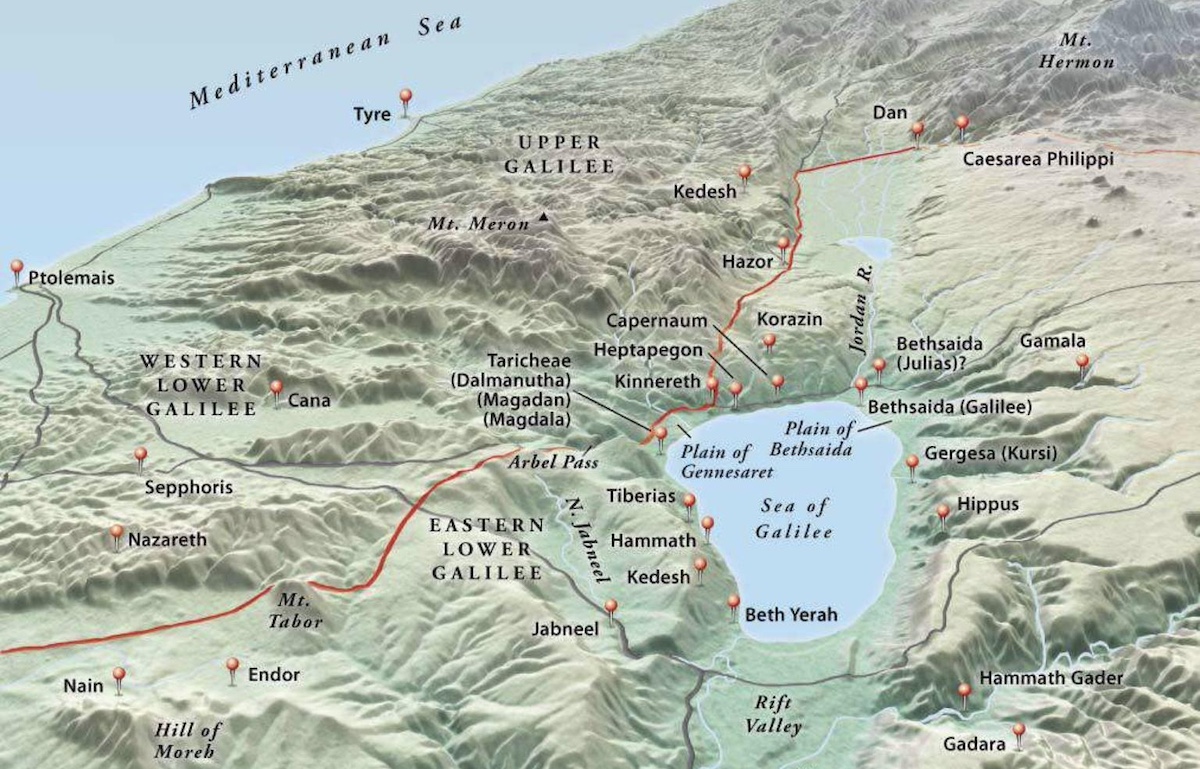Discovering the Significance of Cana: Exploring Maps and Insights from Galilee

Cana, a small village nestled in the picturesque region of Galilee, holds profound significance in biblical history as the site of Jesus Christ’s first recorded miracle—turning water into wine at a wedding feast. Let’s embark on a journey to explore the geography, context, and spiritual significance of Cana through Bible maps and historical insights.
Cana Bible Map: Locating the Village
Cana is situated in the northern part of Israel, in the region of Galilee, approximately 9 miles (14 kilometers) northeast of Nazareth. The Cana Galilee map places the village amidst rolling hills and fertile plains, surrounded by vineyards, olive groves, and fields of grain. Despite its modest size and unassuming appearance, Cana holds a central place in the gospel narrative, serving as the backdrop for one of Jesus’ most memorable miracles.
Context of Cana in Biblical Narrative:
In the Cana of Galilee map, we encounter the village as the setting for Jesus’ inaugural miracle recorded in the Gospel of John (John 2:1-11). According to the account, Jesus and his disciples were invited to a wedding feast in Cana, where they encountered a shortage of wine—a significant social faux pas in Jewish culture. At the request of his mother, Mary, Jesus performed his miraculous sign, transforming water into the finest wine, much to the amazement of the wedding guests and the steward of the feast.
Spiritual Significance of Cana:
The Cana Israel map not only depicts the physical location of the village but also invites us to reflect on its deeper spiritual significance. Cana serves as a symbol of Jesus’ transformative power and abundant grace, as demonstrated in the miracle of turning water into wine. This miraculous sign revealed Jesus’ divine authority and inaugurated his ministry, foreshadowing the greater works and wonders to come.
Legacy of Cana in Christian Tradition:
The village of Cana has left an indelible mark on Christian tradition and devotion, drawing pilgrims and visitors from around the world to commemorate the miracle of the wedding at Cana. The site is revered as a place of pilgrimage and prayer, where believers gather to seek inspiration, renewal, and spiritual blessings.
Exploring Cana Today:
While the exact location of ancient Cana remains a subject of debate among scholars, modern visitors to the region can explore several sites identified with the biblical village, including present-day Kafr Kanna, a bustling town believed by some to be the site of ancient Cana. Pilgrims can visit the Franciscan Wedding Church, which commemorates the miracle of Jesus’ first sign, and participate in worship services, prayer, and reflection.
In conclusion, the village of Cana holds a special place in biblical history and Christian devotion, offering a glimpse into the transformative power and abundant grace of Jesus Christ. Through Bible maps and historical insights, we gain a deeper understanding of Cana’s significance as the site of Jesus’ inaugural miracle and its enduring legacy in the hearts and minds of believers throughout the ages.
